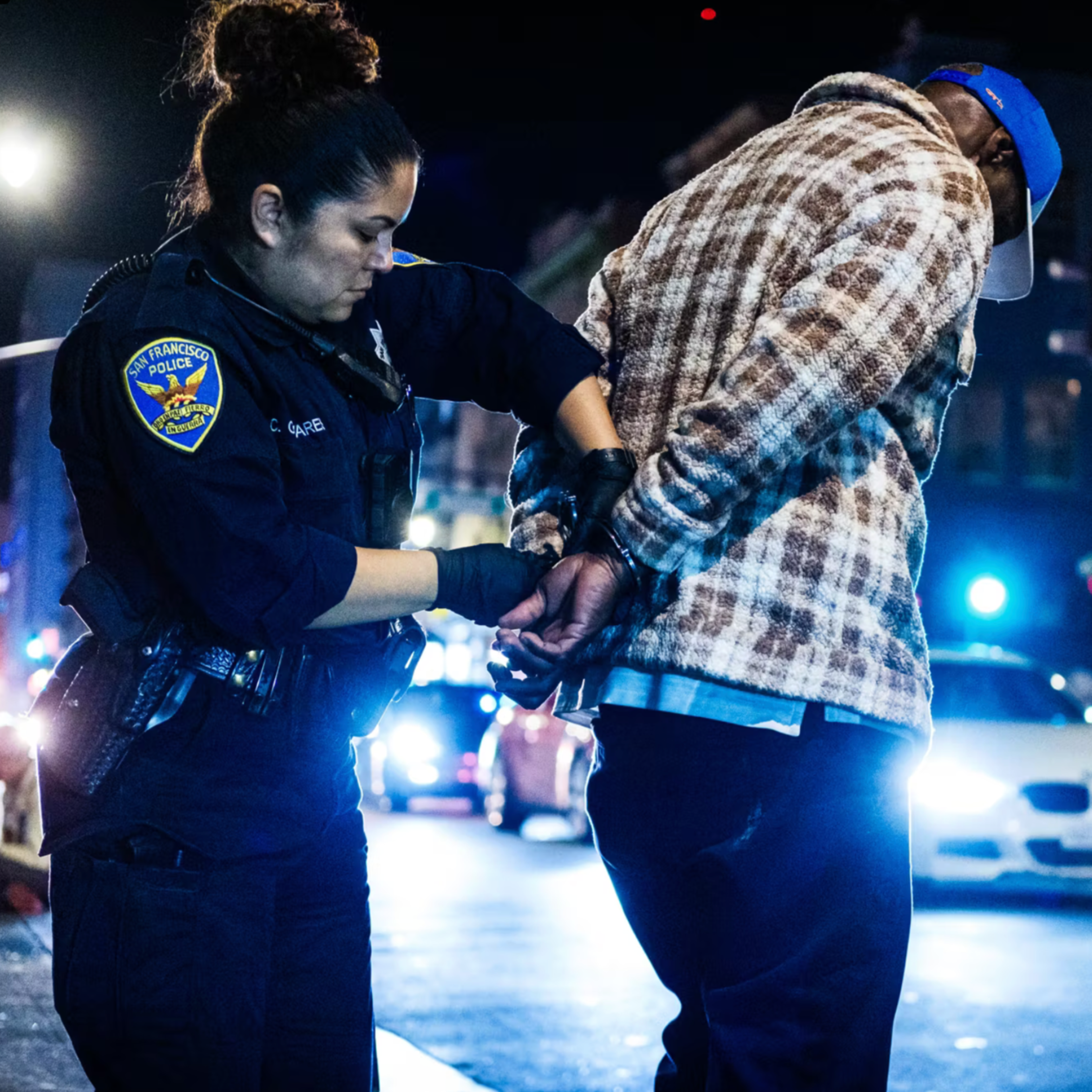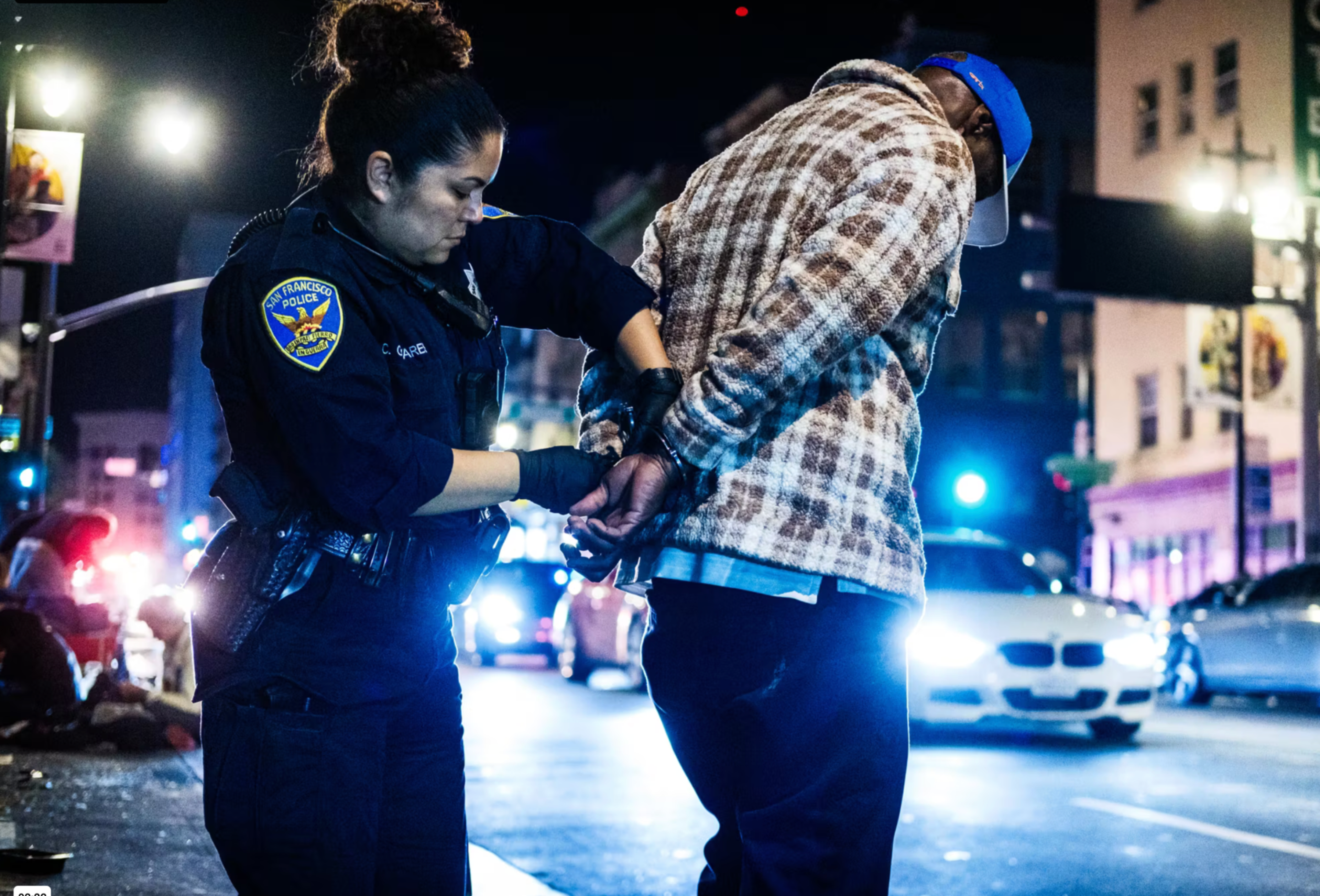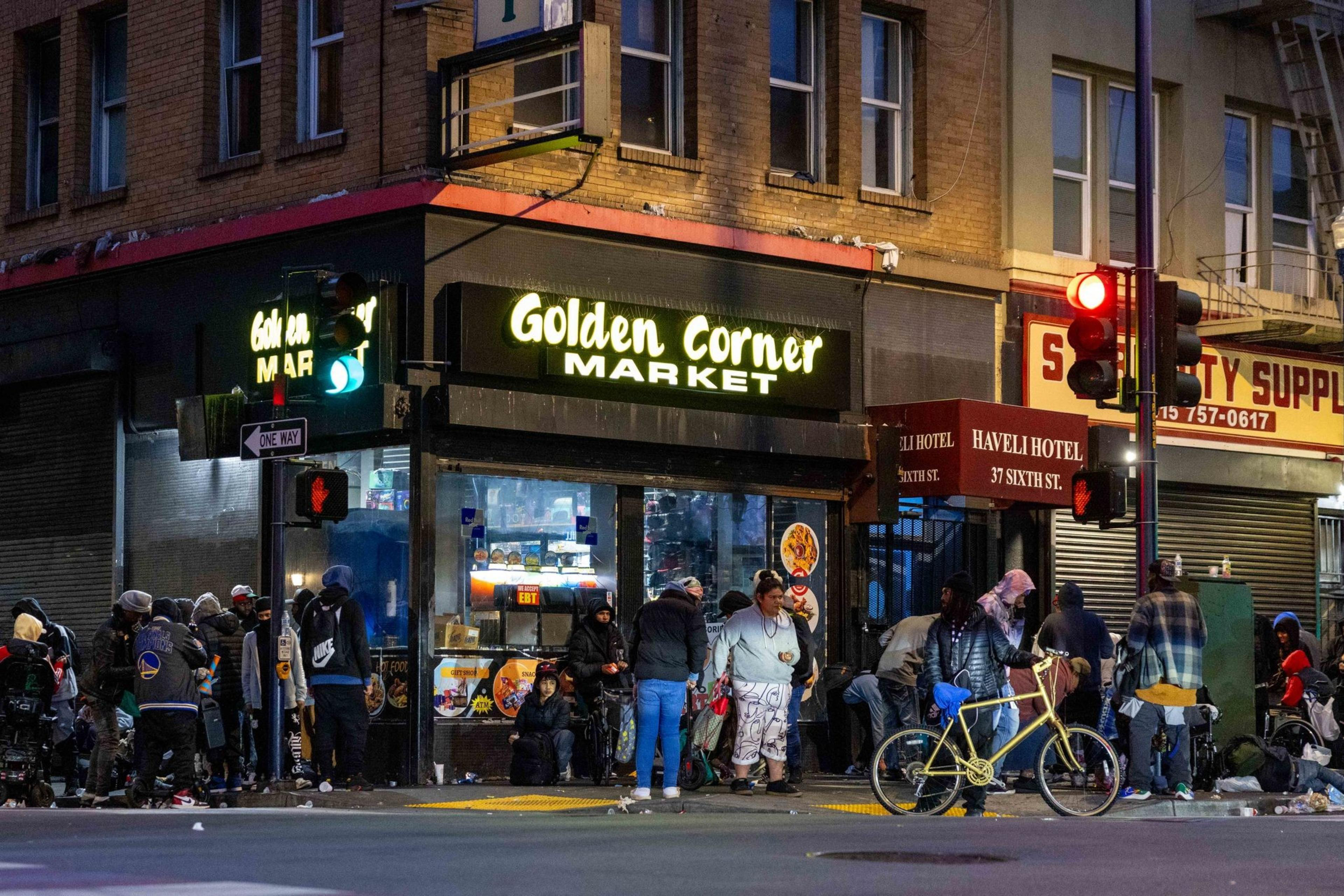San Francisco has ramped up late-night drug raids to keep President Donald Trump from deploying federal forces to the city, a top police official told officers in a union meeting last week.
According to minutes from the Nov. 19 Police Officers Association board meeting obtained by the Standard, Deputy Chief Nicole Jones said the department’s “show of force” in the Tenderloin and SoMa was directly tied to “keeping President Trump from deploying the National Guard and ICE” in San Francisco.
The comments offer the first clear acknowledgment from inside the department that the sudden escalation in nighttime drug enforcement is a direct response to White House pressure.
The behind-the-scenes explanation contrasts with the mayor’s public message. While Mayor Daniel Lurie has highlighted the stepped-up police presence — even touting it in a recent Instagram reel — he has stopped short of linking the crackdown to Trump’s threat, insisting alongside police and prosecutors that San Francisco can handle its drug crisis without federal intervention.
But the timing is unmistakable. Since Lurie’s Oct. 22 call with Trump — when the president agreed to hold off on sending federal agents after being told the new mayor was “making substantial progress” on fighting crime — SFPD has rapidly expanded overnight drug raids, moving officers onto late-night shifts, and accelerating arrests.
Behind the scenes, police leaders have been more blunt about what’s behind the push.
Longer hours, expanded operations
During the SFPD union gathering, Jones — a rumored finalist for top cop — drew a straight line between the intensified crackdown and the White House.
Her statement linking increased nighttime drug enforcement to the threat of federal deployment came in response to a member’s question about how the crackdown was affecting routine patrols.
Jones said that DMACC — the Drug Market Agency Coordination Center (opens in new tab), which partners local cops with federal agents to combat illegal narcotics in the city’s toughest neighborhoods — would be staffed with backfill to support the expanded operations.
When later asked about her comments, Jones confirmed that the SFPD has “intensified operations,” leaning on officers to work longer hours to make up for staffing shortages.
The results have been promising, she added.
“They’ve seized an unprecedented amount of narcotics and made hundreds of arrests in these last three weeks,” Jones said in a statement sent through the mayor’s office over the weekend. “We’ve made it clear that the SFPD, along with our state and federal law enforcement partners, can do this work without additional outside intervention. Our rank-and-file understands that this mission is critical for our city.”
Lurie shared a similar message in a video filmed a few days ago at the DMACC hub as officers prepared for an overnight shift.
“This entity, DMACC, has been doing great work during the day,” he said in the clip posted Friday to Instagram, “and now we’re going to do it at night.”
‘Supercharged enforcement’
A video of the operation, which began this past Wednesday and lasted through early Thursday, shows SFPD officers working with the FBI and other federal agents, serving warrants and issuing warnings.
By the end of the shift, according to the video, the DMACC operation resulted in 13 drug-dealing arrests and 18 user arrests.
According to a Nov. 13 SFPD press release (opens in new tab), the “supercharged enforcement,” which includes buy busts and fugitive apprehension, began in late October and focused on the Tenderloin, SoMa, and Mission. During the last week of October, Yep reassigned officers from several investigative units and patrol to help DMACC.
In the first two weeks of what Yep described as a “doubling down (opens in new tab)” on DMACC, the effort netted over 350 arrests, 12 pounds of drugs seized, and 16 guns.
Initially, the multiagency task force focused on Seventh and Mission streets and United Nations Plaza. More recently, the task force has broadened its scope to the Sixth Street corridor in SoMa and areas around the 16th and 24th Street BART stations in the Mission
DMACC was founded in spring 2023 under Mayor London Breed to focus on the Tenderloin and SoMa. In its first year, Breed and then-SFPD Chief Bill Scott said (opens in new tab) the task force made over 3,000 arrests and seized roughly 200 kilos of narcotics.
By the first half of this month, according to police, DMACC operations resulted in seizures of 960 pounds of narcotics, including 342 pounds of fentanyl, and 11,123 arrests — 2,258 of them for drug dealing.
In a May 29, 2024, news release celebrating the first anniversary of DMACC, Breed and Scott touted nighttime operations as a key part of the effort. It's unclear when, exactly, the city scaled back those overnight operations.
When The Standard analyzed police data over the summer, a half year into Lurie’s tenure as mayor and a few months after DMACC expanded into the Mission, it showed that drug arrests fell dramatically in the Tenderloin once the clock struck midnight. Enforcement peaked each day between 1 and 2 p.m., but by 4 a.m., it tended to stop almost entirely.
The trend wasn’t new: Since at least 2018, SFPD focused drug enforcement during daylight hours.
When The Standard visited several hotspots for open-air drug dealing between midnight and 1 a.m. Friday, the streets were far quieter compared to recent months, with police swarming the usual locations in the Tenderloin, SoMa, and Mission.
One officer, who was playing video games in his squad car at Seventh and Market streets while on watch, told The Standard that his shift had been rescheduled to end at 4 a.m. instead of midnight to deter late-night drug activity.
The efforts seemed to have temporarily displaced the illegal market, as the routine crowd of dealers and users was gone. It wasn’t immediately clear where they moved.
In announcing his decision to withdraw the threat of federal forces last month, the president said he thought Lurie was “making a mistake” and that it would be easier if the feds cracked down “faster, stronger, and safer.”
“But let’s see how you do,” Trump added.
The Truth Social message ended on a note of cheerful foreboding: “Stay tuned!”
The irony of the White House pressuring SF to crack down on drugs, of course, is that federal prosecutions have plummeted since Trump took office.
Data show a steep decline in federal charging rates this year — both in San Francisco (opens in new tab) and nationally (opens in new tab) — as the president steers law enforcement away from drug, trafficking, and child exploitation cases toward immigration enforcement that largely rounds up people with no serious criminal record (opens in new tab).


